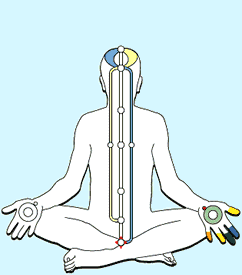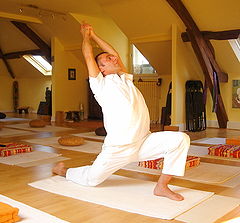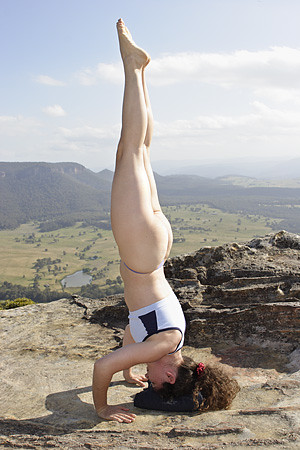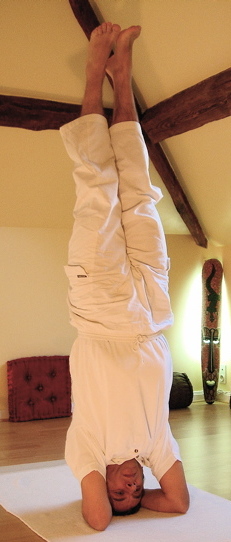
It is believed that the latent power of human body is in the form of a coil. This coil has one end in the base of our body at the bottom below the genital organ. Another end is in head. The vital energy running through this coil is known as Kundalini. The great thinkers are divided about the very characteristics of the Kundalini. Some says that it is psycho energy. Others claim that it is spiritual. We may take it as psycho-spiritual power.
Rising Kundalini
Kundalini Yoga: Referred as the ‘Yoga of Awareness’ tries to establish proper communication between our mind and body. It takes the help of Meditation techniques and moderation of breathing, Pranayama. A system involving yoga postures and meditation was devised by Patanjali. He taught his followers the set of rules which help in awakening of the spiritual energy.
Kundalini, a Female Snake: It is believed that the Kundalini can be awakened. The idle energy can be activated. In ancient India
Chakras: When it starts rising, the disciple would feel the flow of energy going upward. Ultimate station of Kundalini is believed to be the head. While awakening in stages, this energy stops at certain points. These points are named as Chakras. These Chakras are like the junctions where the fast train of rising Kundalini would rest. Activation of seven successive Chakras would make a yogi wiser and more settled in self. It is the purest form of spiritual journey.
Awakening of Kundalini: The awakening of this latent energy would make us experiencing the infiniteness of universe. It is true that the concept of Kundalini and subsequent yoga techniques to awaken it have been invented and devised by those yogis who followed Hindu religion. But the concept of Kundalini has nothing to do with any religion or sect. It is a pure science of knowing about the flow of energy. While learning about it, a disciple comes to know about many secrets of human body.
New Age Concept about Kundalini: With growing awareness about importance of Kundalini, the western psychologists and thinkers have started taking interest in the subject. They believe that Kundalini Yoga or any other endeavour to experience the presence of Kundalini is an effort to build a bridge of communication between our physical body and the subtle body. (Images courtesy Photobucket ,and By Русский: Белик Мария Александровна English: Belik Maria Aleksandrovna [CC-BY-SA-3.0], from Wikimedia Commons)

 10:49 PM
10:49 PM
 abhi
abhi






